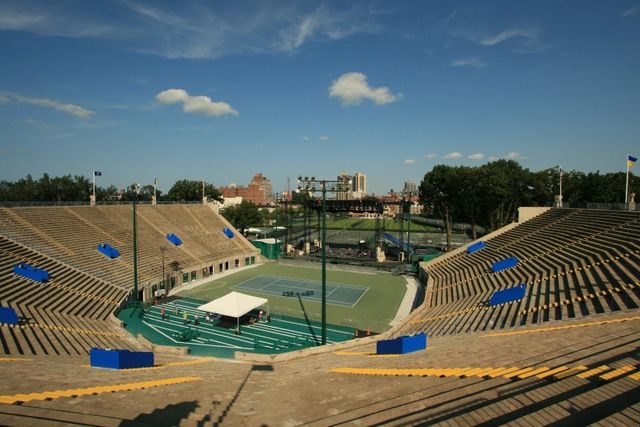Behind the Scenes of "The Eternal Space," A Play About Penn Station's Demolition
This Thanksgiving, our Chief Experience Officer reflects on his gratitude for the play that changed his life!


Image via
Rego-Forest Preservationby Michael Perlman
The year is 1977 and the 96th US Open Tennis is in full swing in Forest Hills, Queens as Eddie Dibbs and John McEnroe battle it out on the court. Commotion in the stands and the players flee the tennis court.
A spectator had been shot in the leg by what was speculated to be a stray bullet shot from a nearby apartment. The West Side Tennis Club, had witnessed several other strange events in the summer of 1977. A transgender controversy regarding Renee Richards, the “spaghetti racquet” created by Werner Fischer, a bomb threat in protest of South African players, and some of the most riotous fans in US Open history.
Contention among board members while discussing relocation led one member to resign and several players to drop out. The decision to move the tournament from the serenity of the Forest Hills setting to its current location in Flushing Meadows-Corona Park caused quite the uproar, but since that summer has primarily taken place on the other side of the Long Island Expressway.
After 129 years, American and international tennis players continue to fight for championship. Since the 1977 move, clay courts have been replaced by hardcourt. While we watch and anticipate the 2014 champions in Flushing Meadows, the West Side Tennis Club stadium is beginning to look more like the Roman Forum than a professional tennis venue, though it has seen some high profile musicians come through in its attempted transformation to music venue. The club has maintained its clay courts and safely avoided stray bullets for the time being. Let us cheer on Federer, the Williams sisters, Murray, Djokovic, Sharapova, or Isner–and here’s to a safe and cordial 2014 US Open!
Read more about the illustrious history of the West Side Tennis Club, the original home of the US Open here.
Subscribe to our newsletter